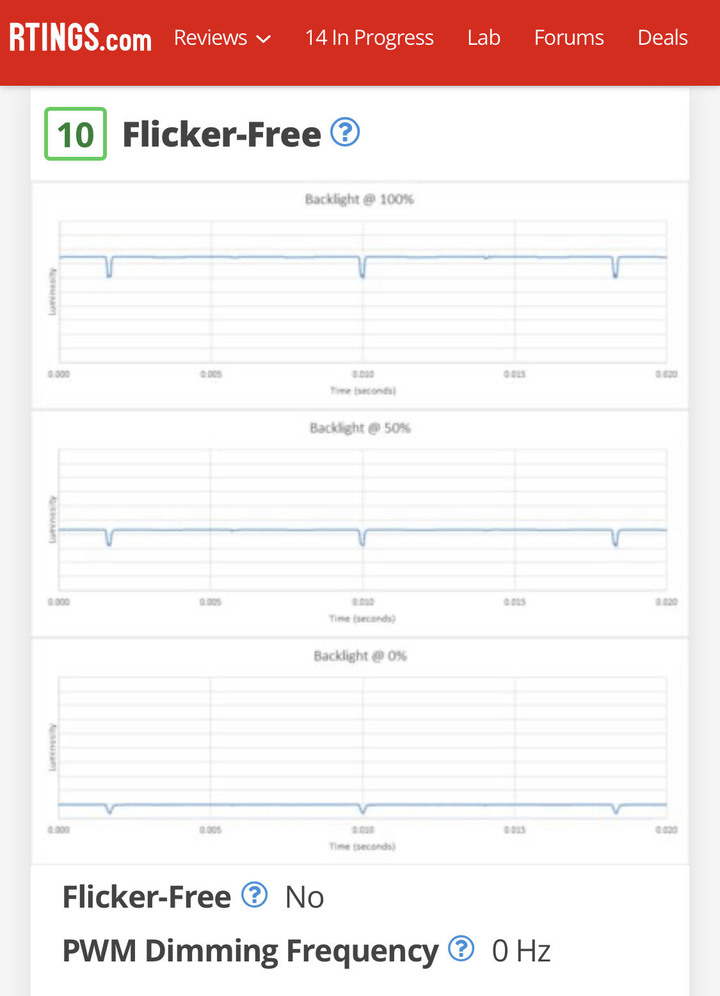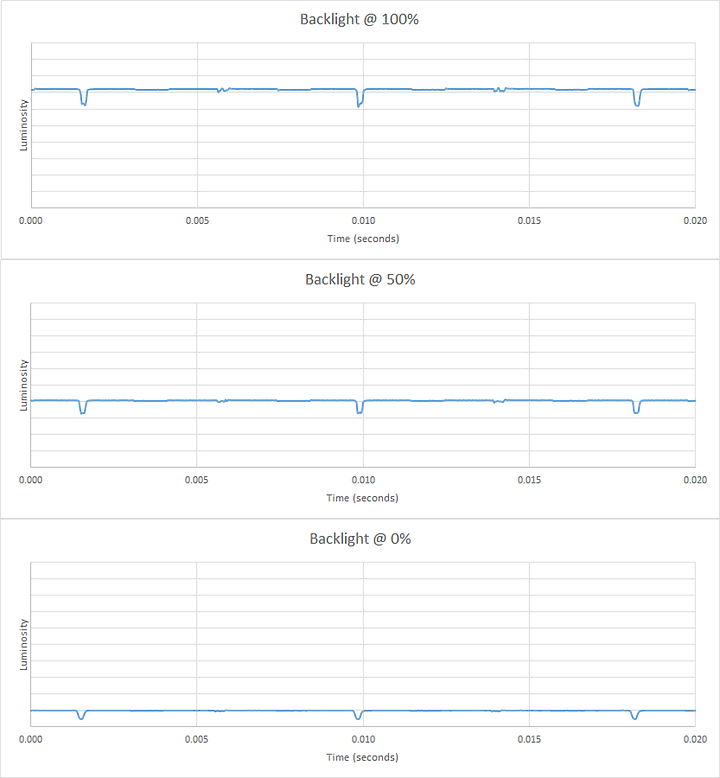jackawu wrote:
其實不是這樣的,BFI那種50% Duty的不討論,OLED基於某種原因沒辦法DC恆亮,都會伴隨著120HZ左右的亮度Drop。亮度越低幅度越深,以LG C2來說約在15%~50%之間。
且跟傳統PWM調光全螢幕亮暗切換不同,OLED的亮度Drop是像素循序掃描,所以對眼睛的傷害較低,但也沒有真正的DC恆亮好,兩者還是有區別。
至於OLED到底為什麼要120HZ暗一次,我就不知道了,希望知道的人指導一下,感謝。
15%~50%是錯的。
“像素循序掃描”
是那邊生出來的名詞?
再講下去是不是連
電子束,果凍效應…
都要出來了?
跟面板驅動電路特性有關
本身oled像素自主發光
螢幕更新時
(120Hz面板8ms切換
(60Hz面板16ms切換
子像素進行充電
亮度會略為下降
但可忽略不計
The LG C2 isn't quite flicker-free, as there's a small decrease in brightness that corresponds with the refresh cycle of the display. It's very different from pulse width modulation flicker (PWM) on TVs with LED backlights.
The LG G2 isn't quite flicker-free, as there's a small decrease in brightness that corresponds with the refresh cycle of the display. This is very different from pulse width modulation flicker (PWM) on TVs with LED backlights.
The Sony A95K isn't technically flicker-free because there's a slight dip in brightness every 8 ms, which coincides with the refresh rate. However, it isn't the same as pulse width modulation on LED TVs because it isn't a full on and off, and it isn't noticeable either.
示波圖皆一樣































































































